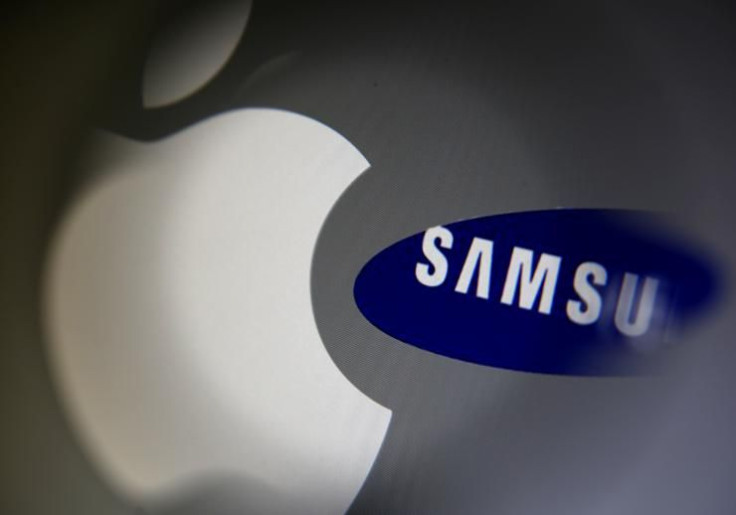Lumia 950 XL vs iPhone 6S Plus vs Galaxy Note 5: Can Windows Hello Iris Scanning Give Microsoft The Edge?

The Lumia 950 XL, after months of speculation, is official. Microsoft is taking the high-end phablet market head on with a device that tries to put the biggest and best phone it can into your pocket. Competition is heating up: Apple has just unveiled its second phablet, the 6S Plus, while Samsung's Galaxy Note 5 improves on a long-standing product line. The 950 XL has some interesting advantages, like the ability to expand the storage, but that won't matter if the raw specs don't match up. Can Microsoft compete?
Security
The Note 5 and 6S Plus both come with fingerprint scanners, requiring the user to rest a finger on the device before it will unlock. The 950 XL, however, blows this away with iris scanning powered by Windows Hello. While the competition is fighting to make print recognition as good as possible, Microsoft has leaped ahead with a technology that doesn't require you to touch the screen. If you're looking for the best in wow factor to show your friends, Microsoft has you covered.
Connectivity
This is a game changer: Microsoft Continuum will let you plug a keyboard, mouse and monitor into your Lumia and use it as a full Windows 10 PC. If you don't already own a computer in your home, for the cost of a new phone and some extra accessories you'll also get an entire PC. For those who own a Mac, Apple's Handoff lets you switch seamlessly between your phone and Mac, starting documents on one and moving unfinished work onto the other. On the Android side a Google account can move settings and bookmarks among various instances of Chrome, but for the best integration with desktop computing, it's the Lumia.
Camera
The 950 XL has an impressive 20-megapixel camera with a triple-LED flash. The 6S Plus and Note 5 come nowhere near: The two devices come with cameras shooting 12MP and 16MP, respectively, and only two LEDs in their flashes. It's not all about megapixels and light count, but the excellent reviews of older Lumia PureView cameras suggest Microsoft knows what it's doing when it comes to optics. However, until we get some comparison shots, it won't be clear how the 950 XL compares in the real world.
Processor
The larger phone of Microsoft's two new devices comes with a stronger processor, a hexacore Qualcomm chip. The 6S Plus comes with an Apple A9 chip, while the Note 5 comes with an Exynos 7420. These place them at the higher end of the market, but until we see some Geekbench scores for the Lumia, it's hard to say specifically which one has the upper hand.
Screen
The Lumia 950 XL matches the Note 5 on display: both devices come with a 1,440-by-2,560 display, stretching over 5.7 inches. The screens pack around 515 pixels per inch (ppi), way above what experts consider to be the point at which the human eye can see. The 6S Plus, meanwhile, sports a 1,920-by-1,080 display over 5.5 inches. This only gives 401 ppi, but Apple claims the human eye will not be able to spot anything finer at normal viewing distance.
The 6S Plus also has Apple's new 3D touch display technology, allowing for harder presses to access shortcuts faster or to animate "live photos." But despite this, if you're looking for the biggest screen, it's between the 950 XL and the Note 5. The Note 5 has the added bonus of stylus support, which could seal the deal for hardcore note-takers.
Design
The Lumia 950 XL is missing the garish antenna bands of its competitors, but comes in a cheaper-looking case. The 6S Plus and Note 5 both sport glass and aluminum-based designs. If you're looking for premium fit and finish, you may want to look elsewhere beyond the Lumia, but a design that uses parts less susceptible to breaking may be a bonus for those that really don't want a case.
Conclusion
It's a tough decision. The Lumia is fighting against a well-established market, with big promises about bringing Windows 10 to the phablet. If you're committed to the Microsoft ecosystem, it's an easy choice, but others who aren't so wedded to the idea have a tricky choice to make. Iris scanning sets the 950 XL apart from the competition, but fingerprint scanning will also foot the bill if security is the topmost concern. In the end, what may seal the deal is the price: The Lumia 950 XL costs $649 while the Note 5 starts at $699 for 32GB, and the 6S Plus starts at $749 for the 16GB model.
© Copyright IBTimes 2025. All rights reserved.





















